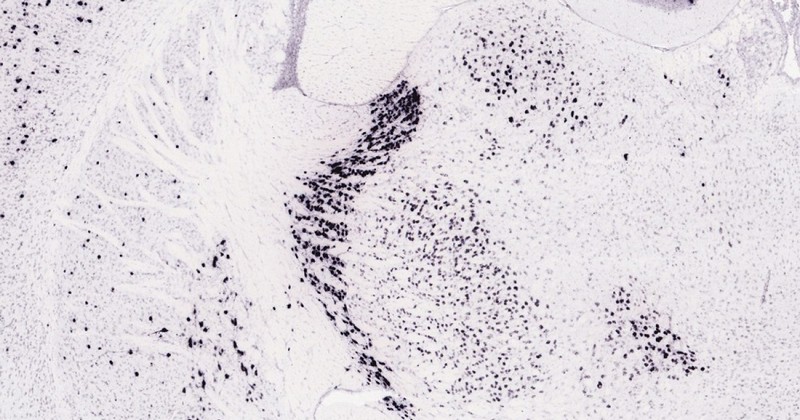Thalamic syndrome: symptoms, causes and treatment

This neurological disorder caused by injury to the thalamus results in Pain and hemiparesis.
The thalamus is a brain structure that serves as a crossing point for multiple neural pathways (it is a "relay center"). Its lesion causes thalamic syndrome, a clinical condition that triggers pain and hemiparesis.a clinical picture that triggers various symptoms, with predominance of thalamic pain.
Here we will know in detail the causes of this syndrome, as well as its symptoms and possible treatments.
The thalamus
The thalamus is a brain structure; it is a central gray nucleus at the base of the brain. a central gray nucleus at the base that serves as a crossroads for multiple neural pathways.. It is a paired structure, located on either side of the third ventricle. It occupies approximately 80% of the diencephalon and is divided into four large sections (anterior, medial, lateral and posterior), in turn divided into several nuclei.
All sensory and sensory pathways originating in the spinal cord, brainstem and hypothalamus, converge in the thalamus, where they relay (it is a "relay center"). In addition, the different coordination pathways of the extrapyramidal system, vestibular nuclei, cerebellum, striate nuclei and cerebral cortex are added.
Thalamic syndrome: characteristics
Thalamic syndrome, also known as Déjerine-Roussy syndrome, is characterized by the following symptoms: transient mild hemiparesis, hemicoreoathetosis, hemihypoesthesia, hyperalgesia, allodynia, and hemihypoesthesia.alodinia and hemiataxia with astereognosia of variable intensity. This syndrome occurs in the presence of lesions of the posterior nuclei of the thalamus.
The clinical manifestations produced by thalamic lesions are very diverse (since they involve many pathways), not very systematizable, relatively infrequent and little known by the clinician, although we can specify them, as we will see below.
This syndrome was first described in early 1903, when Jules Joseph Dejerine and Gustave Roussy were studying clinical and pathological facts of the thalamic syndrome. Their initial description of the thalamic syndrome is maintained to the present day, and few changes have been added to it in the last 100 years, although Lhermitte in 1925 and Baudouin in 1930 made important contributions to defining the characteristics of thalamic hemorrhage.
On the other hand, Fisher emphasized the language disorders and ocular motility disturbances produced by thalamic lesions. produced by thalamic lesions.
Thus, on the other hand, twenty years after that first description, Foix, Massson and Hillemand, other investigators, demonstrated that the most common cause of the syndrome was the obstruction of the thalamogeniculate arteries (branches of the (branches of the posterior cerebral artery).
Symptoms
The most distressing symptom of thalamic syndrome is pain; it is usually intractable, intense, disabling and constant. Thalamic pain is of central origin, that is, its origin is in the cerebral cortex.
The pain, moreover, is refractory and unpleasant, and resists analgesic medication.. Pain usually presents as the initial symptom in 26 to 36% of patients. The pain sensation is burning and lacerating, and is commonly associated with painful hyperesthesia in the same distribution. This hyperesthesia is defined as an exaggerated sensation of tactile stimuli (such as tingling sensation).
Other important symptoms in thalamic syndrome are paresthesias, transient mild hemiparesis, hemicoreoathetosis, hemihypoesthesia, hyperalgesia, allodynia and hemiataxia with astereognosia of variable intensity.
In particular, patients with this syndrome manifest a sensory loss contralateral to the lesion in all modalities.. In addition, vasomotor disturbances, severe dysesthesias of the involved hemibody and sometimes choreoathetoid or ballistic movements also appear.
Causes
The cause of thalamic syndrome is a lesion in the thalamus. Specifically, the lesion involves the inferior and lateral nuclei of the thalamus..
The most common lesions of thalamic syndrome are of vascular origin (stroke), although there are also lesions of other nature, such as those of metabolic, neoplastic, inflammatory and infectious origin.
On the other hand, alluding to the vascular origin of the syndrome, thalamic infarcts are generally due to occlusion of one of the four major vascular regions: posterolateral, dorsal, paramedian and anteriorposterolateral, dorsal, paramedian and anterior.
Treatment
Treatment of thalamic syndrome mainly involves the associated pain.. In the past, treatment was based on neurosurgery, with interventions such as thalamotomies (removal of a small area in the thalamus), mesencephalotomies (removal of the midbrain) and cingulotomies (section of the cingulum).
However, new neurosurgical treatments such as spinal cord stimulation, motor cortex stimulation and chronic deep brain stimulation, using stereotactic approach techniques, have been established.
On the other hand, other new treatments have also been used in recent years, from opioid drugs, tricyclic antidepressants and analgesic-antiepileptic drugs (e.g. gabapentin). (e.g. gabapentin).
Bibliographic references:
- Salazar-Zúñiga, A. and Carrasco-Vargas, H. (2006). Treatment of thalamic syndrome (Dejerine-Roussy) secondary to ischemic cerebral infarction, with gabapentin.Report of four cases and review of the literature.Neurol Neurocir Psiquiat, 39(2): 70-75.
- De Betolaza, S., Núñez, M., & Roca, F. (2016). Thalamic lesions: a semiological challenge. Thalamic lesions: a semiological challenge. Revista Uruguaya de Medicina Interna, 1, 12-19.
(Updated at Apr 13 / 2024)